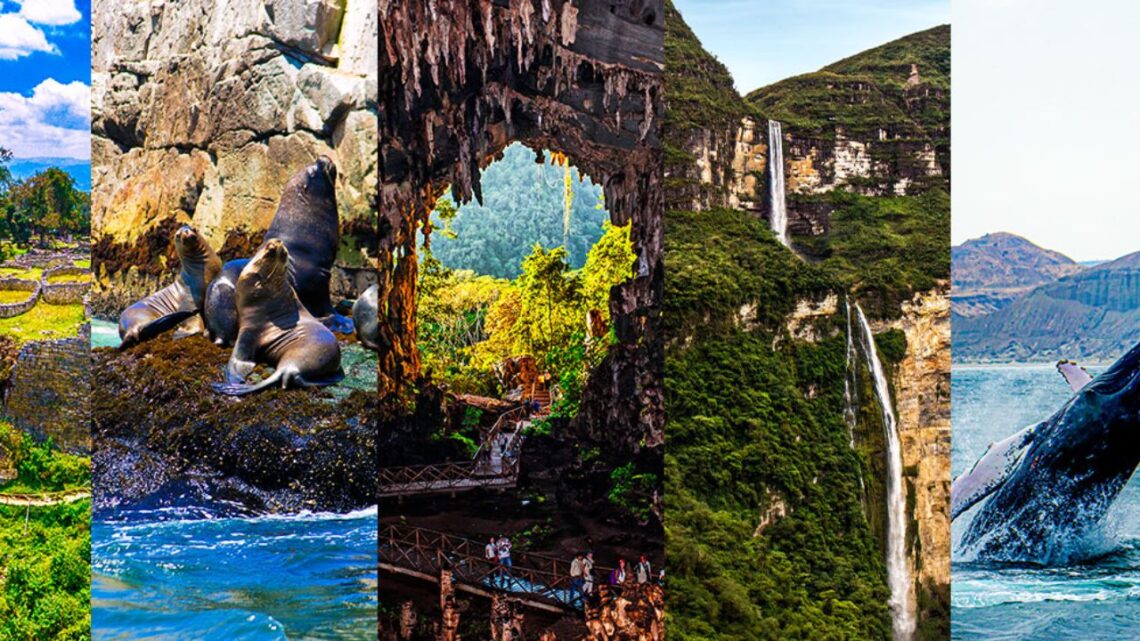Peru has earned a sustainability milestone: four protected natural areas—Huascarán National Park, Lachay National Reserve, Mar Tropical de Grau National Reserve, and Tingo María National Park—were recognized among the Top 100 Green Destinations for their inspiring, measurable actions in responsible tourism, biodiversity protection, and community benefits.
Together they showcase Peru’s coast, Andes, and rainforest, and how nature-positive travel can uplift local livelihoods while protecting fragile ecosystems.
Peru’s Four Honorees at a Glance
| Destination | Region | Approx. Protected Area | Signature Good-Practice Focus | Visitor Highlights |
|---|---|---|---|---|
| Huascarán National Park | Áncash (Cordillera Blanca) | ~340,000 ha | Climate action & glacier-risk management; watershed protection for Andean communities | Peru’s highest peak Huascarán (6,768 m), turquoise glacial lakes, Andean condor, spectacled bear |
| Lachay National Reserve | Lima (Huaura–Huaral) | ~5,070 ha | Inclusive access and trail interpretation in a fragile lomas (fog-fed) ecosystem | Seasonal green bloom (Jun–Oct), signed trails near Lima, birding and endemic flora |
| Mar Tropical de Grau National Reserve | Piura & Tumbes (Pacific) | ~115,700 ha | Marine conservation with artisanal fishing heritage and responsible whale-watching | Four sectors (Isla Foca, Cabo Blanco–El Ñuro, Punta Sal reefs, Máncora Bank), humpback whales, sea turtles |
| Tingo María National Park | Huánuco (High Jungle) | ~4,780 ha | Karst-forest conservation with community-guided tourism | Cueva de las Lechuzas cave, “Bella Durmiente” ridgeline, oilbirds and rich birdlife |
Why These Sites Stood Out
1) Huascarán National Park: Climate-Sensitive Andes
Home to the world’s highest tropical mountain range, Huascarán protects hundreds of glaciers and glacial lakes that feed downstream valleys.
Park management marries risk monitoring (glacial-lake outburst preparedness) with low-impact trekking and local guide cooperatives, demonstrating how climate adaptation and eco-tourism can reinforce each other.
2) Lachay National Reserve: Inclusive Nature Near Lima
Just a few hours from the capital, Lachay’s fog-nourished hills turn emerald each winter.
The reserve’s recognized story centers on inclusive, sensory-rich interpretation that welcomes visitors with visual impairments, plus boardwalks and signed loops that minimize trampling in this delicate lomas habitat.
It’s a model for accessibility and ecosystem care within easy reach of urban Peru.
3) Mar Tropical de Grau: Ocean Biodiversity & Living Heritage
Peru’s newest large marine reserve links reefs, islets, and migration corridors, safeguarding breeding and feeding grounds for whales, turtles, and reef fish.
Its “good-practice” narrative highlights artisanal sailboat culture, gear transitions that reduce bycatch, and community-led tourism—from responsible whale-watching to coastal interpretation—so that conservation and livelihoods rise together.
4) Tingo María National Park: Caves, Forests, Communities
This compact high-jungle park protects the iconic Cueva de las Lechuzas cave and lush yunga forests.
Visitor flows are managed through guided circuits, capacity limits, and local micro-enterprise participation, which helps protect oilbirds, bats, and sensitive cave formations while channeling tourism revenue to nearby communities.
Practical Tips for Eco-Conscious Travelers
- Best season: Lachay is most vivid June–October; Huascarán offers clear skies in the dry season (May–Sept); Mar Tropical de Grau sees humpbacks typically mid-year to early spring; Tingo María is year-round, with rainforest showers common.
- Low-impact choices: Hire local certified guides, stay in community-run lodges, and choose wildlife-safe operators (e.g., proper distances for whale-watching).
- Give back: Pay conservation fees, buy locally made crafts, and follow Leave No Trace to protect trails, reefs, and caves.
Peru’s quartet of honorees proves that sustainable tourism is more than a label—it’s measurable action: protecting glaciers and fog-fed hills, securing marine corridors, and conserving cave-forest ecosystems while strengthening local economies.
By choosing these Top 100 sites, travelers help fund conservation, celebrate living cultural heritage, and keep Peru’s natural wonders thriving for generations.









